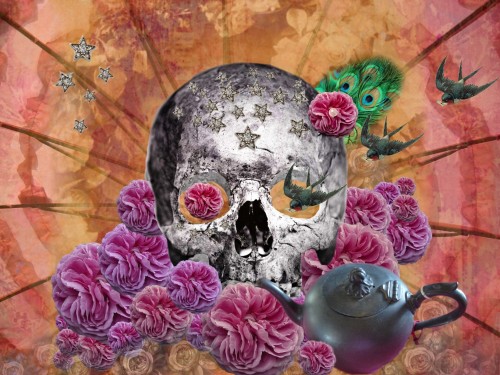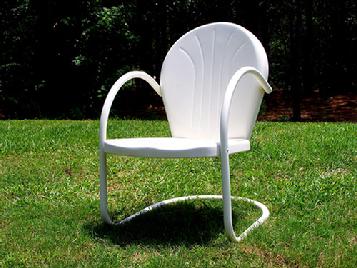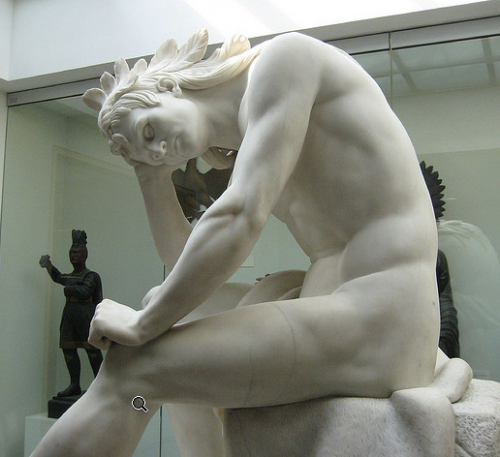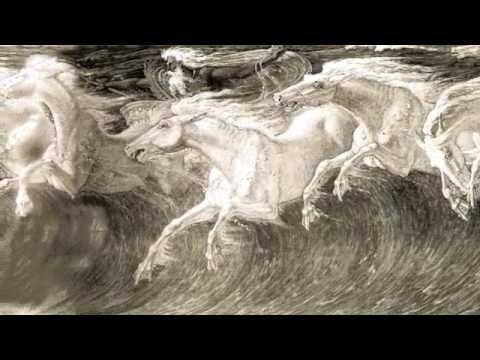Idealized human depictions in cemetery art abound. I suppose they’re meant to represent a world without death. Yet it’s clear that time and the elements ravage even what is supposed to have been immutable.
[portfolio_slideshow id=473]

The Amateur's Guide To Death & Dying
Enhancing Life Near Death
Idealized human depictions in cemetery art abound. I suppose they’re meant to represent a world without death. Yet it’s clear that time and the elements ravage even what is supposed to have been immutable.
Nothing But Death by Pablo Neruda
There are cemeteries that are lonely,
graves full of bones that do not make a sound,
the heart moving through a tunnel,
in it darkness, darkness, darkness,
like a shipwreck we die going into ourselves,
as though we were drowning inside our hearts,
as though we lived falling out of the skin into the soul.
And there are corpses,
feet made of cold and sticky clay,
death is inside the bones,
like a barking where there are no dogs,
coming out from bells somewhere, from graves somewhere,
growing in the damp air like tears of rain.
Sometimes I see alone
coffins under sail,
embarking with the pale dead, with women that have dead hair,
with bakers who are as white as angels,
and pensive young girls married to notary publics,
caskets sailing up the vertical river of the dead,
the river of dark purple,
moving upstream with sails filled out by the sound of death,
filled by the sound of death which is silence.
Death arrives among all that sound
like a shoe with no foot in it, like a suit with no man in it,
comes and knocks, using a ring with no stone in it, with no
finger in it,
comes and shouts with no mouth, with no tongue, with no
throat.
Nevertheless its steps can be heard
and its clothing makes a hushed sound, like a tree.
I’m not sure, I understand only a little, I can hardly see,
but it seems to me that its singing has the color of damp violets,
of violets that are at home in the earth,
because the face of death is green,
and the look death gives is green,
with the penetrating dampness of a violet leaf
and the somber color of embittered winter.
But death also goes through the world dressed as a broom,
lapping the floor, looking for dead bodies,
death is inside the broom,
the broom is the tongue of death looking for corpses,
it is the needle of death looking for thread.
Death is inside the folding cots:
it spends its life sleeping on the slow mattresses,
in the black blankets, and suddenly breathes out:
it blows out a mournful sound that swells the sheets,
and the beds go sailing toward a port
where death is waiting, dressed like an admiral.Nothing But Death by Pablo Neruda
There are cemeteries that are lonely,
graves full of bones that do not make a sound,
the heart moving through a tunnel,
in it darkness, darkness, darkness,
like a shipwreck we die going into ourselves,
as though we were drowning inside our hearts,
as though we lived falling out of the skin into the soul.
And there are corpses,
feet made of cold and sticky clay,
death is inside the bones,
like a barking where there are no dogs,
coming out from bells somewhere, from graves somewhere,
growing in the damp air like tears of rain.
Sometimes I see alone
coffins under sail,
embarking with the pale dead, with women that have dead hair,
with bakers who are as white as angels,
and pensive young girls married to notary publics,
caskets sailing up the vertical river of the dead,
the river of dark purple,
moving upstream with sails filled out by the sound of death,
filled by the sound of death which is silence.
Death arrives among all that sound
like a shoe with no foot in it, like a suit with no man in it,
comes and knocks, using a ring with no stone in it, with no
finger in it,
comes and shouts with no mouth, with no tongue, with no
throat.
Nevertheless its steps can be heard
and its clothing makes a hushed sound, like a tree.
I’m not sure, I understand only a little, I can hardly see,
but it seems to me that its singing has the color of damp violets,
of violets that are at home in the earth,
because the face of death is green,
and the look death gives is green,
with the penetrating dampness of a violet leaf
and the somber color of embittered winter.
But death also goes through the world dressed as a broom,
lapping the floor, looking for dead bodies,
death is inside the broom,
the broom is the tongue of death looking for corpses,
it is the needle of death looking for thread.
Death is inside the folding cots:
it spends its life sleeping on the slow mattresses,
in the black blankets, and suddenly breathes out:
it blows out a mournful sound that swells the sheets,
and the beds go sailing toward a port
where death is waiting, dressed like an admiral.
Angels are probably the most popular image in cemetery art. Here we see three examples from the bereft to the sexy.
We’ll feature more angels in the future.
The White Chair
The man whose seat this is,
heavy iron, white paint, that he dragged out
one day into a corner of the rattling leaves
in the seawind, he is not here today.
he went off some place, some business,
and just now he is standing perhaps
amongst other leaves drummed on the same wind
coming in fast off a different sea.
But he has no seat to sit in, and here
it’s as if his chair was waiting for me,
among the dropped brown leaves scurrying
like small animals, like birds into flight.
So therefore I will sit here thinking of him,
someone very like me perhaps, a solitary
who likes company, wherever he is and in what language
he listens to the wind, and what it says to him.
I will disturb nothing. Back again,
he will not know I have been here,
stepping down into the evening to sit
in his chosen spot, lighting his cigar.
Ken Smith
RECONSTRUCTING THE CHANGING FACE OF DEATH, Part 2
— Charles Corr
Humans strive to influence or control nature and the natural patterns of events around them.
Another prominent chance in our mortality patterns has to do with the location or place of death. By 1949 approximately 50% of the deaths in the United States took place in an institution. By 1958 institutionalized deaths had risen to just over 60%. Now, 70-80 percent of deaths in our society occur in an institutional setting.
 Locating death in institutions is a major social change from those times when death ordinarily occurred at home. It means that death is removed in one more way from the midst of our lives. This tend to segregate death from the rest of society. As a result, individuals in our society are now much more likely to die alone, in unfamiliar surroundings, or amongst strangers than they are to die at home in the company of those they love.
Locating death in institutions is a major social change from those times when death ordinarily occurred at home. It means that death is removed in one more way from the midst of our lives. This tend to segregate death from the rest of society. As a result, individuals in our society are now much more likely to die alone, in unfamiliar surroundings, or amongst strangers than they are to die at home in the company of those they love.
This has important and often negative implications for the way dying will be experienced, for survivors, and for the institutions into which death is increasingly thrust, especially if many of those institutions view themselves as “health centers”. In such institutions dying is very likely to be regarded as an unhealthy or undesirable thing to do.
Whereas death has become less erratic and mysterious, more predictable and understandable at the objective level, it is also increasingly an experience that has grown apart from the mainstream of every day life.
Death has become less natural and familiar to us and thus increasingly appears to be less appropriate as a part of a person’s lot in life.
The more the natural death of human beings becomes a less familiar part of our lives, death achieves a startling prominence as an insubstantial fantasy in the mass media and popular culture. Death is staple fare of popular entertainment fantasies. A perverse feature of the cowboy, police, medical and adventure stories depicted on television and in the movies.
We are bombarded with images of death that are apart from and inconsistent with the realities of life. This leads to an even more distorted image of death.
“Tamed death” Life and death were close companions. Death was both familiar and near, a customary fact of human destiny. Tame death was often sad and painful, but it did not appear to threaten the regular order of life’s events as death often does at present.
“Decent Interval” of dying gave the individual and opportunity to assemble family, set important affairs in order, dispose of property, and “prepare to meet the Maker”. The cult of the ars moriendi the “art of dying” encouraged calmness, solemnity, and a sense of awe. Death could be a high point of life. Death is a culmination in which the individual is a full and often dominant participant, and it results in a loss that is not without its consolations for one’s survivors.
“Break with life” or rapture frightening yet obsessive. What was once ordinary or even banal turned into an object of morbid attention.
“Forbidden Death” shameful and prohibited. A pair of misconceived ingredient: depriving the individual of the truth about death’s imminence and the misplacing of the burden on someone other than the dying. All dependent upon an increasingly negative attitude toward death and its implications.
We know in a abstract intellectual way that death is a general fact of life, but the specific event becomes so unusual that it is regarded as quite unreal.
Socialization process mirrors attitudes. death becomes less and less frequent part of our life. False sense of security grows in its fading presence. Death not really a legitimate part of life, regarded as unfortunate, undesirable, and even improper. Increasing distance coupled with decreasing frequency
Responsibility for the sick, elderly, dying and the dead given to select set of institutions and professional functionaries.
Like all disgusting subjects, death can only be introduced into polite conversation obliquely or euphemistically.
A dying person become a “patient” a revealing label– passively enduring, waiting calmly and undergoing care, receiving treatment from another.
the mobilization of a wide range of equipment technical skills and other resources to combat illness and death.
A narrow range of attitudes dictate the perspective of how individuals ought feel, behave and what society will tolerate.
Part 1 HERE!
Go Down, Death by James Weldon Johnson
Weep not, weep not,
She is not dead;
She’s resting in the bosom of Jesus.
Heart-broken husband–weep no more;
Grief-stricken son–weep no more;
Left-lonesome daughter –weep no more;
She only just gone home.
Day before yesterday morning,
God was looking down from his great, high heaven,
Looking down on all his children,
And his eye fell of Sister Caroline,
Tossing on her bed of pain.
And God’s big heart was touched with pity,
With the everlasting pity.
And God sat back on his throne,
And he commanded that tall, bright angel standing at his right hand:
Call me Death!
And that tall, bright angel cried in a voice
That broke like a clap of thunder:
Call Death!–Call Death!
And the echo sounded down the streets of heaven
Till it reached away back to that shadowy place,
Where Death waits with his pale, white horses.
And Death heard the summons,
And he leaped on his fastest horse,
Pale as a sheet in the moonlight.
Up the golden street Death galloped,
And the hooves of his horses struck fire from the gold,
But they didn’t make no sound.
Up Death rode to the Great White Throne,
And waited for God’s command.
And God said: Go down, Death, go down,
Go down to Savannah, Georgia,
Down in Yamacraw,
And find Sister Caroline.
She’s borne the burden and heat of the day,
She’s labored long in my vineyard,
And she’s tired–
She’s weary–
Do down, Death, and bring her to me.
And Death didn’t say a word,
But he loosed the reins on his pale, white horse,
And he clamped the spurs to his bloodless sides,
And out and down he rode,
Through heaven’s pearly gates,
Past suns and moons and stars;
on Death rode,
Leaving the lightning’s flash behind;
Straight down he came.
While we were watching round her bed,
She turned her eyes and looked away,
She saw what we couldn’t see;
She saw Old Death.She saw Old Death
Coming like a falling star.
But Death didn’t frighten Sister Caroline;
He looked to her like a welcome friend.
And she whispered to us: I’m going home,
And she smiled and closed her eyes.
And Death took her up like a baby,
And she lay in his icy arms,
But she didn’t feel no chill.
And death began to ride again–
Up beyond the evening star,
Into the glittering light of glory,
On to the Great White Throne.
And there he laid Sister Caroline
On the loving breast of Jesus.
And Jesus took his own hand and wiped away her tears,
And he smoothed the furrows from her face,
And the angels sang a little song,
And Jesus rocked her in his arms,
And kept a-saying: Take your rest,
Take your rest.
Weep not–weep not,
She is not dead;
She’s resting in the bosom of Jesus.